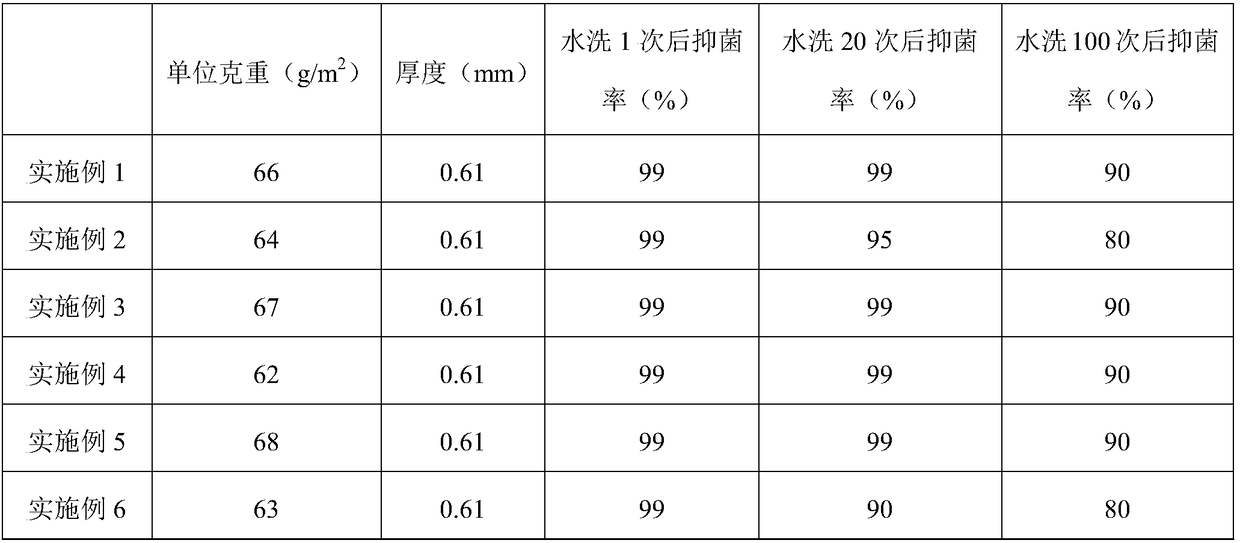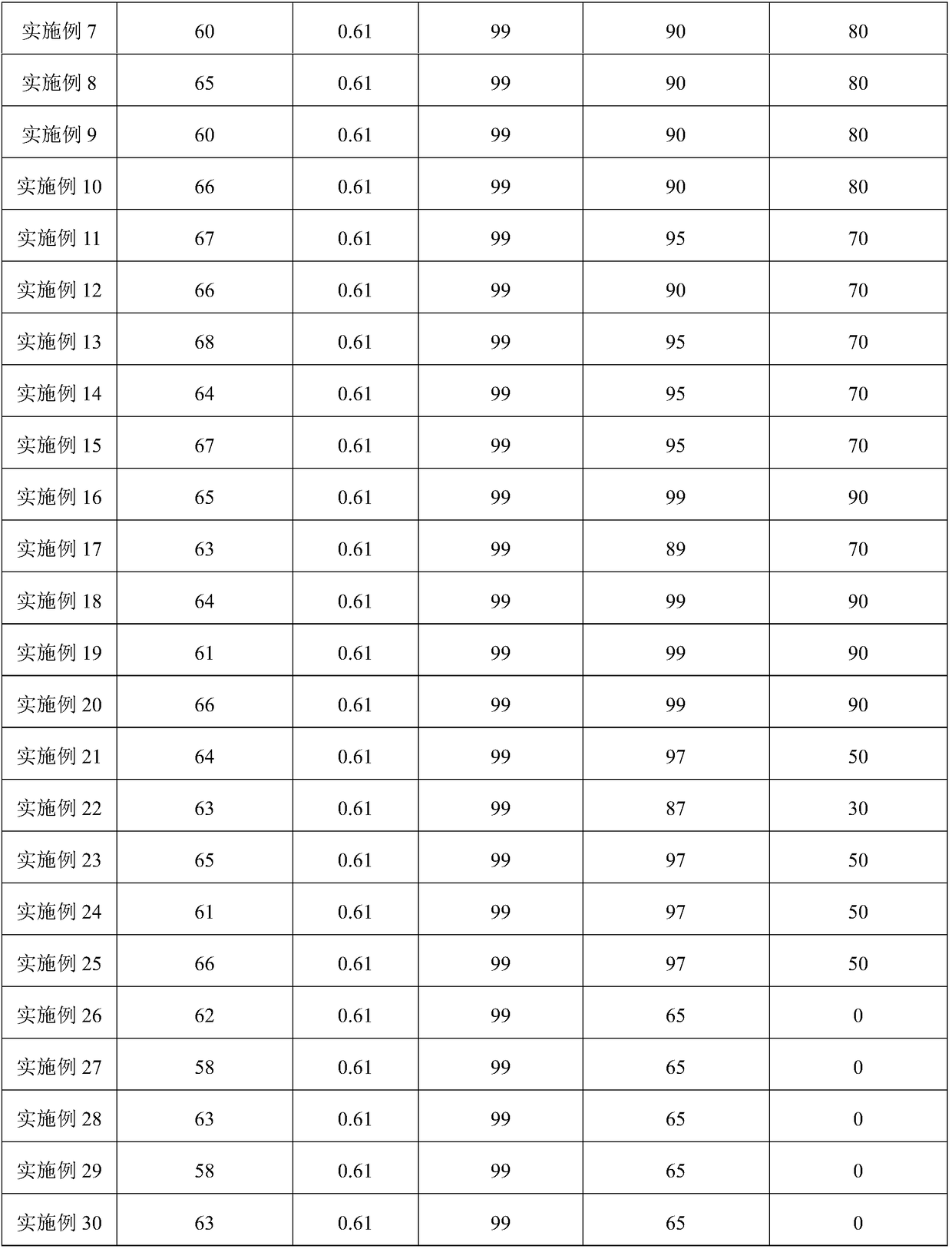Antibacterial non-woven fabric and preparation method and applications thereof
A non-woven fabric and spunlace technology, applied in textiles, papermaking, pharmaceutical formulations, non-woven fabrics, etc., can solve the problems of poor antibacterial effect, achieve the effect of improving antibacterial effect, fine texture, and increasing microcirculation
- Summary
- Abstract
- Description
- Claims
- Application Information
AI Technical Summary
Problems solved by technology
Method used
Image
Examples
Embodiment 1
[0036] In this example, a non-woven fabric is prepared by the following method, which includes the following steps:
[0037] A composite fiber composed of viscose fiber and biomass graphene is used as the raw material of the non-woven fabric, and the length of the composite fiber is 38 mm.
[0038] Prepare the antibacterial non-woven fabric through the steps of opening, carding, netting, spunlace, drying, and winding, wherein the spunlace step uses a hydrogen peroxide solution containing biomass graphene to spunlace at room temperature and high pressure, The mass percent concentration of biomass graphene in the hydrogen peroxide solution is 1%, the molar solubility of the hydrogen peroxide solution is 3mmol / mL, and the high pressure is a pressure of 2×10 6 Mpa, the mass percent content of biomass graphene in the composite fiber is 2%.
[0039] figure 1 It is a schematic diagram of the fiber structure of the nonwoven fabric prepared in this example.
Embodiment 2
[0041] In this example, non-woven fabrics were prepared by the following method:
[0042] A composite fiber composed of viscose fiber and biomass graphene is used as the raw material of the non-woven fabric, and the length of the composite fiber is 45mm.
[0043] Prepare the antibacterial non-woven fabric through the steps of opening, carding, netting, spunlace, drying, and winding, wherein the spunlace step uses a hydrogen peroxide solution containing biomass graphene to spunlace at room temperature and high pressure, The mass percent concentration of biomass graphene in the hydrogen peroxide solution is 0.5%, the molar solubility of the hydrogen peroxide solution is 1mmol / mL, and the high pressure is a pressure of 4×10 6 Mpa, the mass percent content of biomass graphene in the composite fiber is 2.5%.
Embodiment 3
[0045] In this example, non-woven fabrics were prepared by the following method:
[0046] A composite fiber composed of viscose fiber and biomass graphene is used as the raw material of the non-woven fabric, and the length of the composite fiber is 51 mm.
[0047] Prepare the antibacterial non-woven fabric through the steps of opening, carding, netting, spunlace, drying, and winding, wherein the spunlace step uses a hydrogen peroxide solution containing biomass graphene to spunlace at room temperature and high pressure, The mass percent concentration of biomass graphene in the hydrogen peroxide solution is 3%, the molar solubility of the hydrogen peroxide solution is 5mmol / mL, and the high pressure is a pressure of 3×10 6 Mpa, the mass percent content of biomass graphene in the composite fiber is 3%.
PUM
| Property | Measurement | Unit |
|---|---|---|
| length | aaaaa | aaaaa |
| electrical conductivity | aaaaa | aaaaa |
| specific surface area | aaaaa | aaaaa |
Abstract
Description
Claims
Application Information
 Login to View More
Login to View More - R&D
- Intellectual Property
- Life Sciences
- Materials
- Tech Scout
- Unparalleled Data Quality
- Higher Quality Content
- 60% Fewer Hallucinations
Browse by: Latest US Patents, China's latest patents, Technical Efficacy Thesaurus, Application Domain, Technology Topic, Popular Technical Reports.
© 2025 PatSnap. All rights reserved.Legal|Privacy policy|Modern Slavery Act Transparency Statement|Sitemap|About US| Contact US: help@patsnap.com



